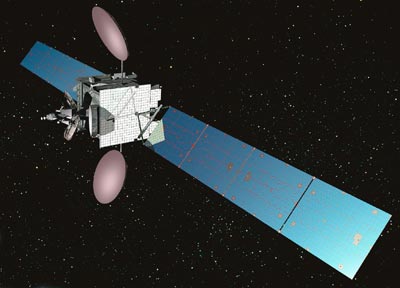
Back to selection
GEO Satellite
Galaxy-10R (G-10R) GEO
succesfull
Launch date
25 January 2000
Dedicated Mission
Country

Purpose
Communication
Position
180° East
Manufacturer
Operator
Launch vehicle
Ariane 42L
Expected lifetime
15+ Years

Galaxy 10R was a U.S. communications satellite operated initially by PanAmSat and later by Intelsat. Built by Hughes Space and Communications (now part of Boeing), the satellite was based on the HS-601HP satellite bus, known for its high-power capabilities and reliable communications performance.
Purpose and Background
Galaxy 10R was commissioned as a replacement for Galaxy 10, which was lost during the failed maiden launch of the Delta III rocket in 1998. To ensure minimal disruption to service, Hughes fast-tracked the production of Galaxy 10R—just 14 months after the build contract was signed—leveraging pre-manufactured components for rapid assembly and integration.
Launch Details
The satellite was successfully launched on January 25, 2000, at 01:04 UTC aboard an Ariane 4 42L-3 launch vehicle. The launch was conducted by Arianespace from ELA-2 at the Guiana Space Centre in Kourou, French Guiana.
Operational Service
Following launch and successful in-orbit testing, Galaxy 10R was positioned in geostationary orbit at 123° West longitude, where it provided digital television, data, and voice communication services across North America. The satellite carried C-band and Ku-band transponders to support a wide range of broadcast and telecommunications applications.
Technical Issues and Retirement
Although designed for a 15-year service life, Galaxy 10R encountered a malfunction in its Xenon Ion Propulsion System (XIPS) in August 2004, which limited its ability to maintain geostationary position. As a result, its operational lifespan was shortened. The satellite was officially retired to a graveyard orbit in June 2008.
Summary
Galaxy 10R played a key role in restoring PanAmSat’s North American coverage following the loss of Galaxy 10. Despite an early propulsion failure, it served effectively for over eight years, highlighting Hughes’ satellite engineering capabilities and Arianespace’s reliable launch service.
GEO Satellite
Galaxy-10R (G-10R)
succesfull
GEO Satellite
Galaxy-10R (G-10R)
succesfull